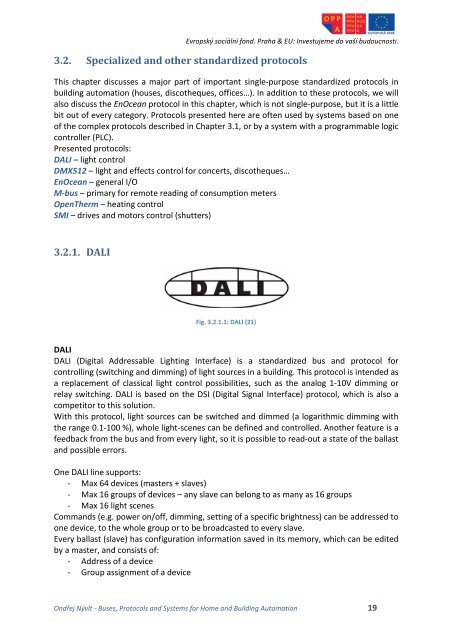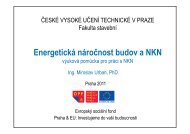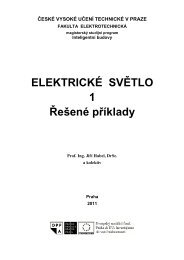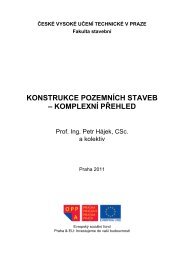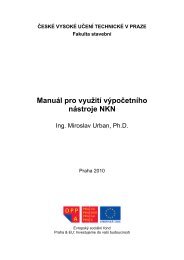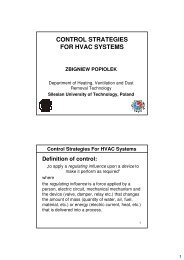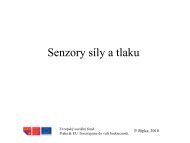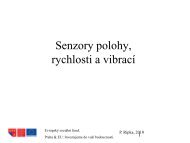Buses, Protocols and Systems for Home and Building Automation
Buses, Protocols and Systems for Home and Building Automation
Buses, Protocols and Systems for Home and Building Automation
You also want an ePaper? Increase the reach of your titles
YUMPU automatically turns print PDFs into web optimized ePapers that Google loves.
Evropský sociální fond. Praha & EU: Investujeme do vaší budoucnosti.<br />
3.2. Specialized <strong>and</strong> other st<strong>and</strong>ardized protocols<br />
This chapter discusses a major part of important single-purpose st<strong>and</strong>ardized protocols in<br />
building automation (houses, discotheques, offices…). In addition to these protocols, we will<br />
also discuss the EnOcean protocol in this chapter, which is not single-purpose, but it is a little<br />
bit out of every category. <strong>Protocols</strong> presented here are often used by systems based on one<br />
of the complex protocols described in Chapter 3.1, or by a system with a programmable logic<br />
controller (PLC).<br />
Presented protocols:<br />
DALI – light control<br />
DMX512 – light <strong>and</strong> effects control <strong>for</strong> concerts, discotheques…<br />
EnOcean – general I/O<br />
M-bus – primary <strong>for</strong> remote reading of consumption meters<br />
OpenTherm – heating control<br />
SMI – drives <strong>and</strong> motors control (shutters)<br />
3.2.1. DALI<br />
Fig. 3.2.1.1: DALI (21)<br />
DALI<br />
DALI (Digital Addressable Lighting Interface) is a st<strong>and</strong>ardized bus <strong>and</strong> protocol <strong>for</strong><br />
controlling (switching <strong>and</strong> dimming) of light sources in a building. This protocol is intended as<br />
a replacement of classical light control possibilities, such as the analog 1-10V dimming or<br />
relay switching. DALI is based on the DSI (Digital Signal Interface) protocol, which is also a<br />
competitor to this solution.<br />
With this protocol, light sources can be switched <strong>and</strong> dimmed (a logarithmic dimming with<br />
the range 0.1-100 %), whole light-scenes can be defined <strong>and</strong> controlled. Another feature is a<br />
feedback from the bus <strong>and</strong> from every light, so it is possible to read-out a state of the ballast<br />
<strong>and</strong> possible errors.<br />
One DALI line supports:<br />
- Max 64 devices (masters + slaves)<br />
- Max 16 groups of devices – any slave can belong to as many as 16 groups<br />
- Max 16 light scenes<br />
Comm<strong>and</strong>s (e.g. power on/off, dimming, setting of a specific brightness) can be addressed to<br />
one device, to the whole group or to be broadcasted to every slave.<br />
Every ballast (slave) has configuration in<strong>for</strong>mation saved in its memory, which can be edited<br />
by a master, <strong>and</strong> consists of:<br />
- Address of a device<br />
- Group assignment of a device<br />
Ondřej Nývlt - <strong>Buses</strong>, <strong>Protocols</strong> <strong>and</strong> <strong>Systems</strong> <strong>for</strong> <strong>Home</strong> <strong>and</strong> <strong>Building</strong> <strong>Automation</strong> 19


